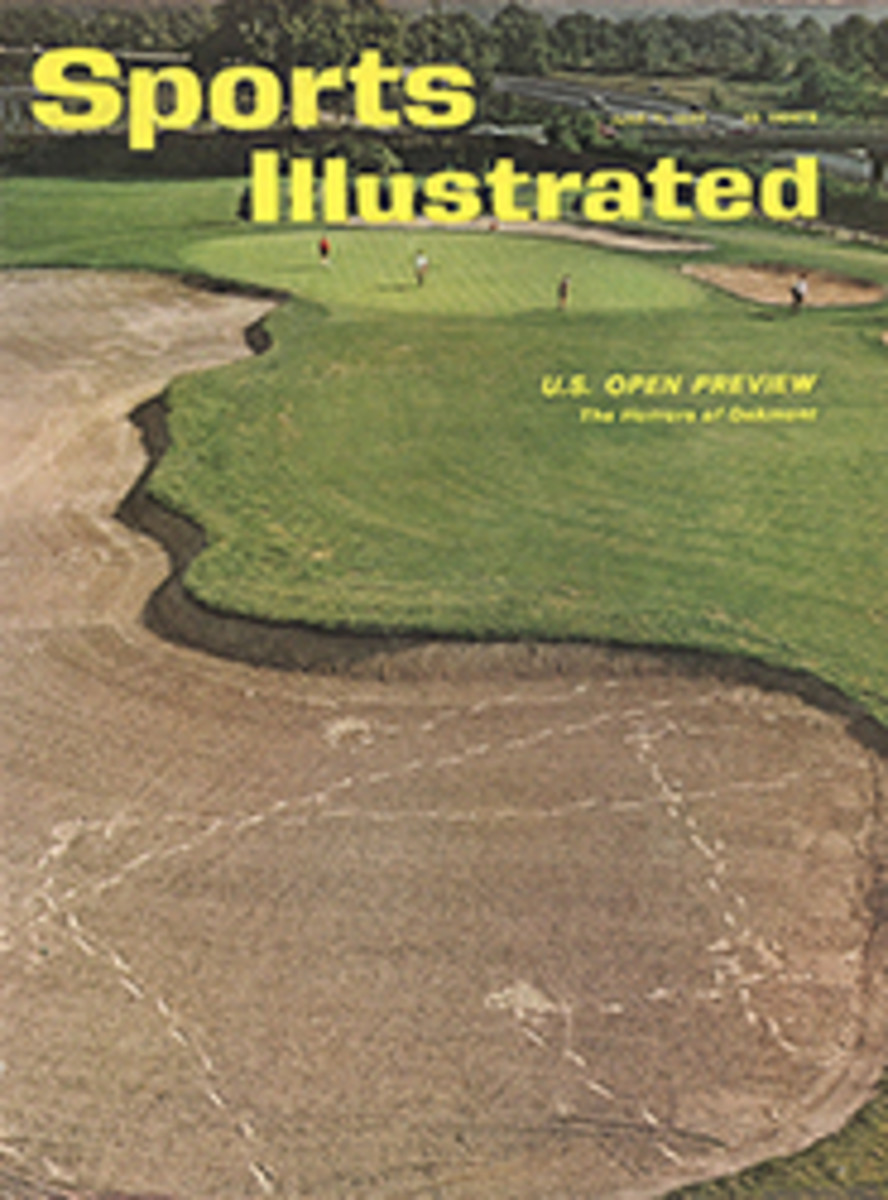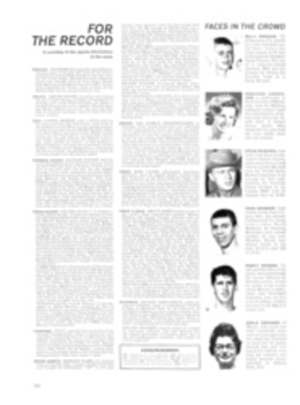
Chile shows the world
Although it left most of North America enveloped in apathy, one of the world's great sporting events began its frenzied, spectacular run last week in four Chilean cities. By the time the World Cup is decided in Santiago on June 17, this international championship of soccer will have caused more lost production man hours than all the World Series of history combined. For more than 250 million soccer players, not to mention the billions of addicts who count themselves soccer fans, this is the most important athletic competition on earth.
The World Cup has been held every fourth year since 1930, with a 12-year war break after 1938, and the 16 teams now in Chile are the survivors of a 53-nation elimination that began back in 1960. The property over which they are fighting—and the word is not entirely out of place here—is a 27-inch trophy of solid silver known as the Jules Rimet Cup. Buried in an Italian farmyard during World War II, it is now valued at $7,000. This is absurd. The actual value of the cup to the competing nations would equal most of their national debts.
Throughout most of Europe and all of South America, soccer football is the national sport. A crowd of 200,000 turned up for one game in Buenos Aires in 1950 and although nothing like this is possible in Chile, where the largest stadium to be used seats only 80,000, more than two million people are expected to watch the 1962 tournament.
The tournament is divided into four four-team groups. Each group plays a round-robin tournament of its own, sending the winner and runner-up into the quarter-finals on Sunday, June 10. Chile, Switzerland, West Germany and Italy, perhaps the best-balanced of the first-round groups, will play in Santiago. Argentina, Bulgaria, Hungary and England play in Rancagua, an agricultural town 62 miles to the south. Brazil, Mexico, Spain and Czechoslovakia play in Vi√±a del Mar, a lovely seaside residential and resort suburb of Valparaiso. The remaining four—Russia, Uruguay, Yugoslavia and Colombia—play in Arica, 1,000 miles away along the Peruvian border. Arica was chosen by the Chilean association on the assumption that Peru would be one of the 16 teams, and when Peru lost to Colombia no one had the heart to take the tournament away from Arica. Especially after the governor, a man named Antonio Eucina, arose at 5 o'clock every morning for a year and sometimes hammered nails and carried brick and mortar himself just to be sure that the stadium was ready on time.
Favored are the defending champions from Brazil, who boast a 21-year-old inside forward named Edison Arantes do Nascimento who is usually called Pelé, sometimes called the Black Pearl, and almost always called the best soccer player in the world. Until Pelé was 16 he was an impoverished peasant boy; now he owns a mansion and a yacht and earns at least $50,000 a year, which will buy an awful lot of coffee in Brazil.
But the usually methodical Russians, who flashed not only their famous goalie, Lev Yashin, but a completely unexpected whirlwind style of soccer during an all-conquering tour through Chile, Uruguay and Argentina last fall, are highly rated, too. So is Czechoslovakia. And the West Germans, despite the absence of a super star, are always tough when coached by Josef Herberger, the 65-year-old genius known as the Sorcerer across the soccer fields of the world.
The Italians, despite their feuds, have in Omar Enrique Sivori, a transplanted Argentinian, the most valuable player in all Europe last year; the Chileans will have the proved advantage of home ground; the young Yugoslavs have been playing together and pointing toward this event for five years. And who can discount England, particularly in the mud? In fact, there are those who believe that almost anyone can win, and this is the history of the World Cup: brilliant individual performances, unaccountable upsets and three weeks of spectacular competition.

